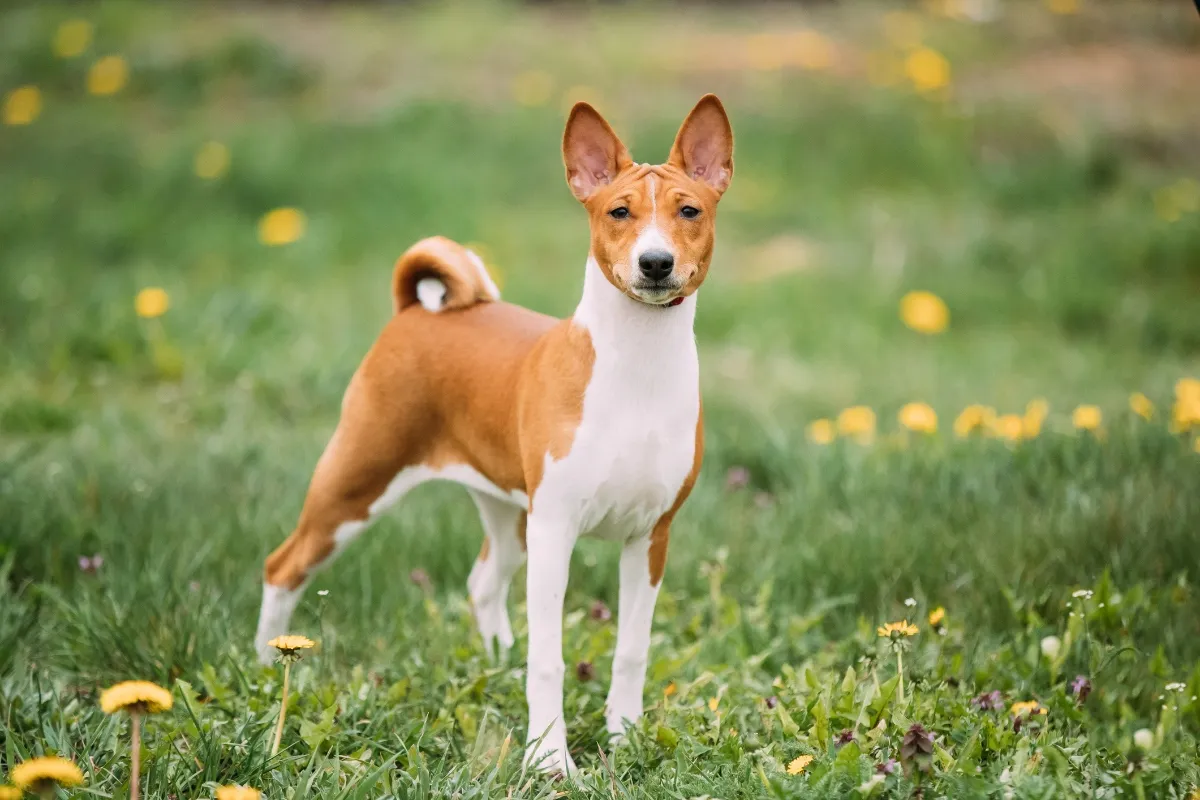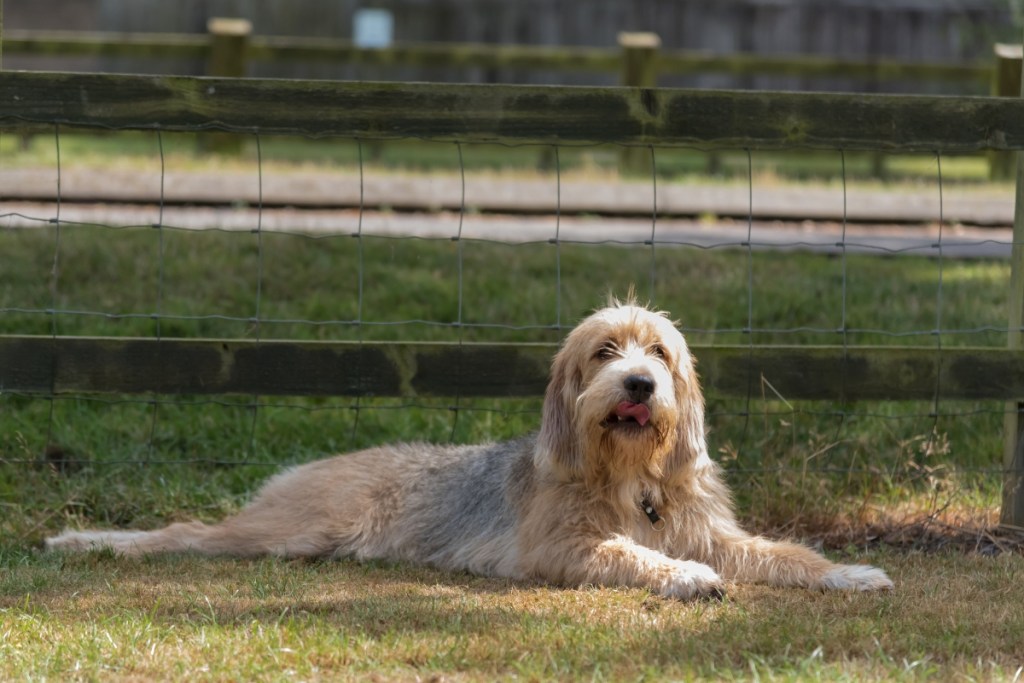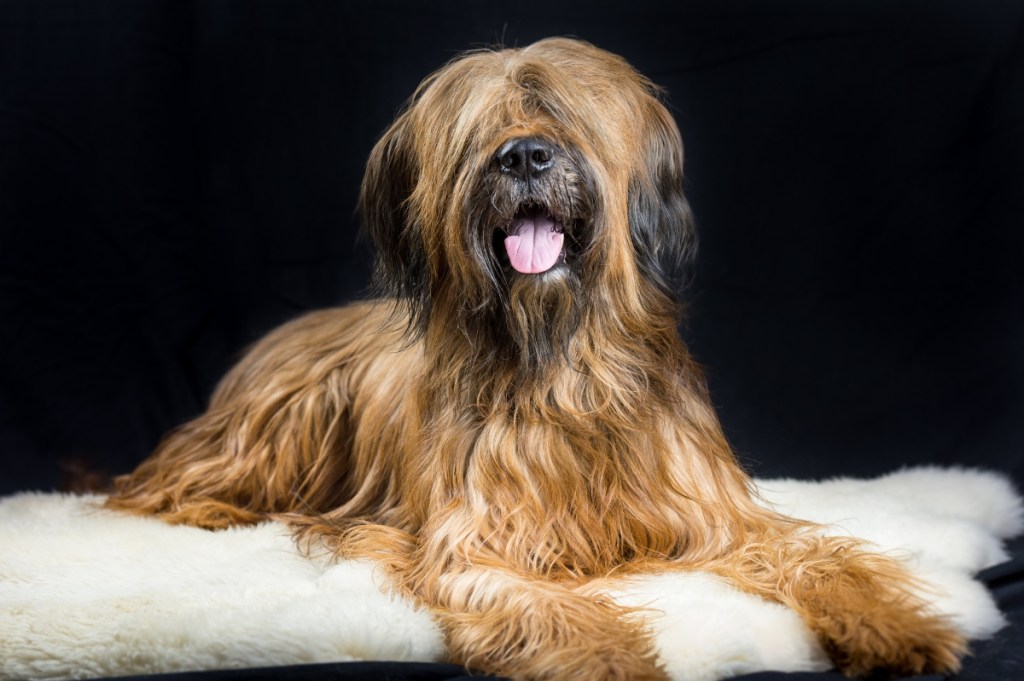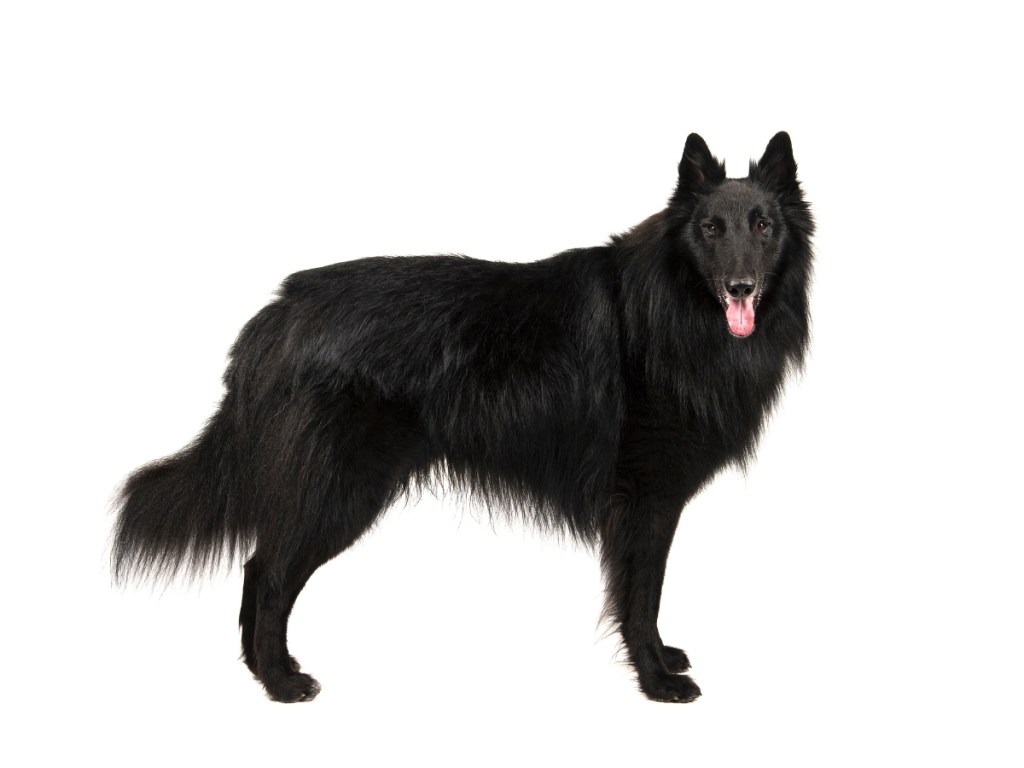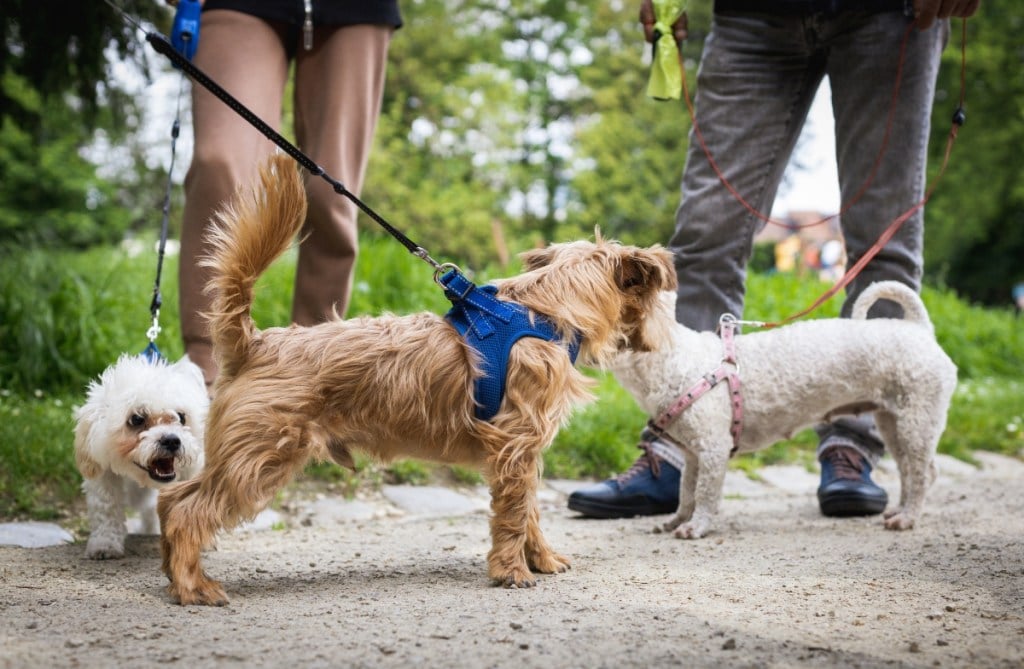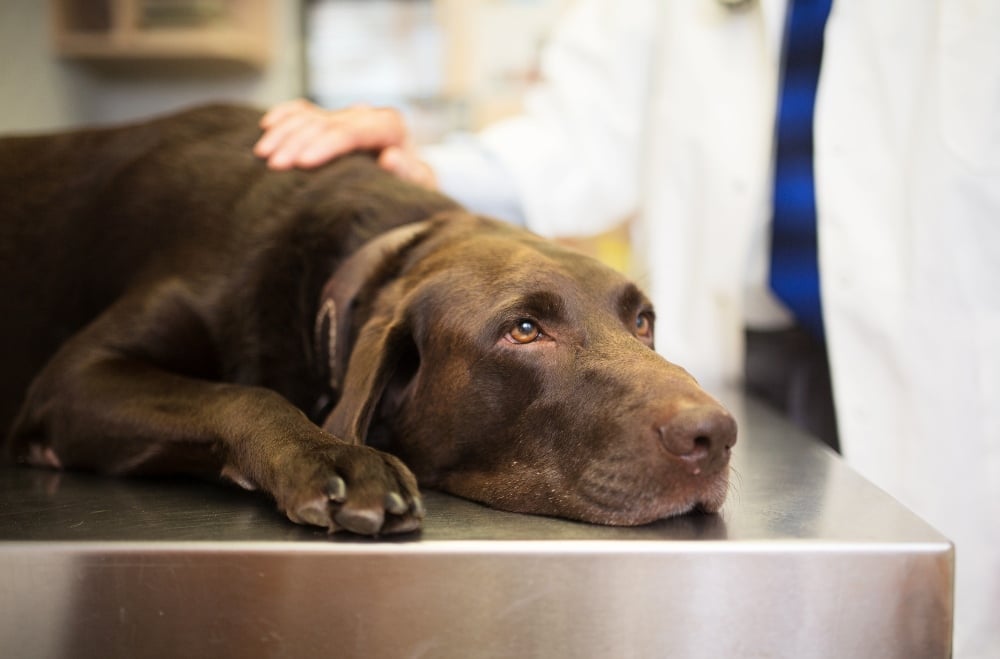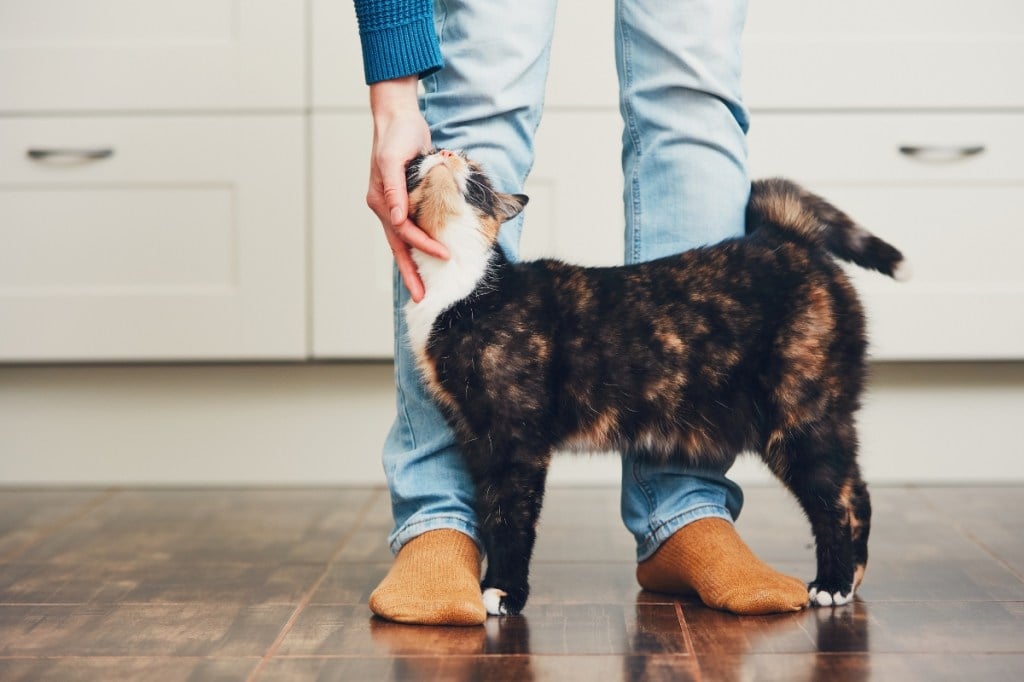Introduction to Basenjis
The basenji is a medium-sized dog that is part of the Hound Group and is known as Africa’s bark-less dog. This smart and independent dog is a unique canine companion that truly does not bark. However, they express themselves in other ways with sounds like a yodel or a chortle.
If you bring a basenji into your life, you’ll need to give the dog plenty of daily exercise. This breed requires some patience due to typical stubborn behaviors, but experienced pet parents will find that basenjis are loyal pups that are generally healthy and easy to groom.
Are you curious to learn more about the basenji dog breed? Our pet experts at Healthy Paws share everything you need to know about the basenji’s size, characteristics, care, health, and more.
Basenjis Size
Male basenji dogs weigh approximately 24 pounds and stand 17 inches tall when fully grown. Female dogs are about 22 pounds in weight and 16 inches in height. Basenjis reach physical maturity between 12 and 14 months of age.
Here’s a chart detailing how big you can expect your basenji to get as the dog grows from puppyhood to adulthood. Female weights may be slightly lower than these averages, while male weights may be slightly higher.
| Weight Chart | 3 months | 6 months | 9 months | 12 months |
| Average female and male basenjis | 4 lbs. | 12 lbs. | 19 lbs. | 22-24 lbs. |
Characteristics of Basenjis
Originally bred as hunting dogs, basenjis are famous in the canine world for their high-pitched, musical sounds. They are quieter than other dogs but still do make noise. Basenjis are energetic dogs best for experienced pet parents rather than first-time dog owners. These friendly and adaptable dogs have low grooming needs but a strong prey drive and potential for mouthiness.
As you get to know a basenji’s personality, here’s what you can expect based on the breed characteristics:
| Breed Characteristic | Level (High, Medium, Low) |
| Affectionate with People | High |
| Good with Kids | High |
| Good with Pets | Medium |
| Need for Exercise | High |
| Energy Level | High |
| Intelligence Level | Medium |
| Able to Be Trained | Low |
| Amount of Barking | Low |
| Amount of Shedding | Low |
History of Basenjis
Some paleontologists believe that basenjis were among the very first domesticated dogs in the world. The dogs originated from Africa and were depicted in ancient artifacts from Egypt and in art from Babylonia and Mesopotamia. They were semi-wild dogs from the regions along the Nile and Congo rivers, and African hunters valued them for their sense of smell, fast speed, and excellent eyesight. Basenjis lived in remote wilderness lands of Africa for thousands of years and did not make an appearance in the West until the late 1800s.
An English explorer brought a pair of basenjis back home in 1895 but died shortly after making the trip. Another breeder brought a pair of the dogs to England in 1937, where they were exhibited as a curiosity for being an unknown breed. A Boston breeder obtained one of the surviving puppies and began breeding basenjis in America. The American Kennel Club began recognizing the breed in 1944.
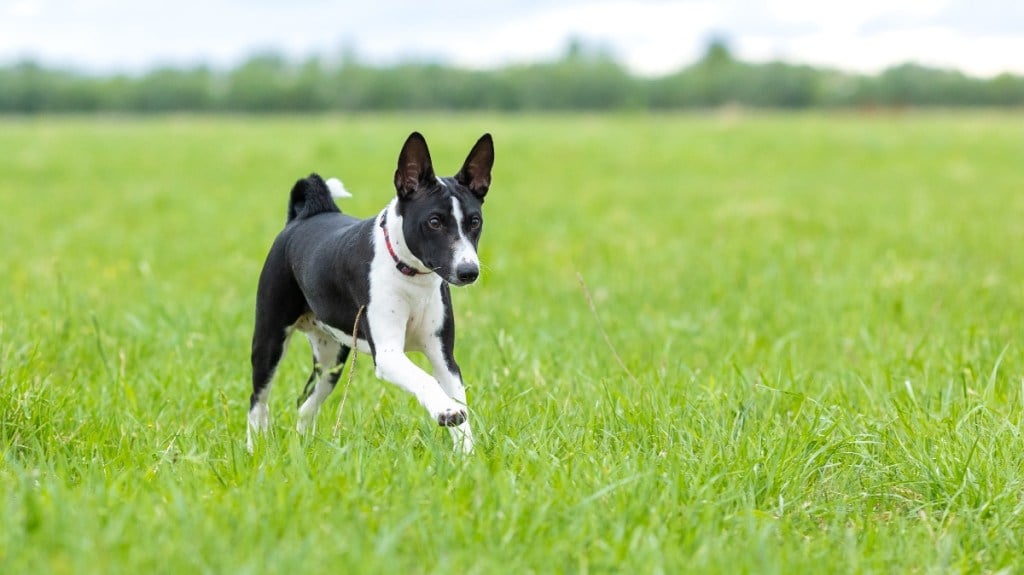
Basenji Standard Information
This short-haired African hunting dog is lightly built, graceful, and elegant. The official standard for the basenji describes how these dogs do not bark yet are not mute and move with agility and ease.
Here is an overview of the breed standard information for basenjis:
Head:
- Proudly carried head
- Dark hazel to dark brown, almond-shaped eyes
- Small, erect, and slightly hooded ears
- Muzzle is shorter than the skull
- Wrinkles on the forehead when ears are erect
- Teeth meet in a scissors bite
Neck, Topline, Body:
- Neck is long and slightly full at throat base
- Body is balanced with a short back
- Ribs are moderately sprung
- Tail is set high on the topline
Forequarters:
- Shoulders are moderately laid back
- Elbows are tucked firmly against the brisket
- Feet are small, oval, and compact, with arched toes and thick pads
- Dewclaws are usually removed
Hindquarters:
- Hindquarters are of medium width, muscular, and strong
- Hocks are well let down
- Moderately bent stifles
- Feet are the same as in the forequarters
Coat:
- Coat is short and fine
- Skin is very pliant
Color:
- Chestnut-red, pure black, tricolor, or brindle
- White feet, chest, and tail tip
- Optional white legs, blaze, and collar
Gait:
- Swift and tireless with a long and smooth stride
- Greater convergence with a faster trot
Caring for Basenjis
They can adapt well to apartment living because of their size and as long as they get outside for the necessary exercise. You’ll need to be patient when training a basenji because the breed is known to be clever and mischievous. Although these are independent dogs, they don’t like to be alone and do best in households with people around most of the time.
Here are some general tips for taking the best care of a basenjis:
Best Living Environments:
- Can be well-suited for apartment life
- Don’t leave a basenji alone for long periods of time
- Fenced-in yard due to strong prey drive
- Best in homes with older children vs. smaller children
Type of Exercise:
- At least 30 minutes of exercise daily
- Dog parks to play and socialize
- Canine sports for a physical and mental challenge
Mental Enrichment:
- Intelligent dogs that need mental stimulation daily
- Agility and obedience training
- Lure coursing and tracking
Training Strategies:
- Can be stubborn and independent
- Must work with the dog’s strong prey drive
Grooming Tips:
- Easy to groom since these dogs meticulously groom themselves
- Only occasional bathing is needed
- Brush the coat weekly
- Clean ear canals and brush teeth
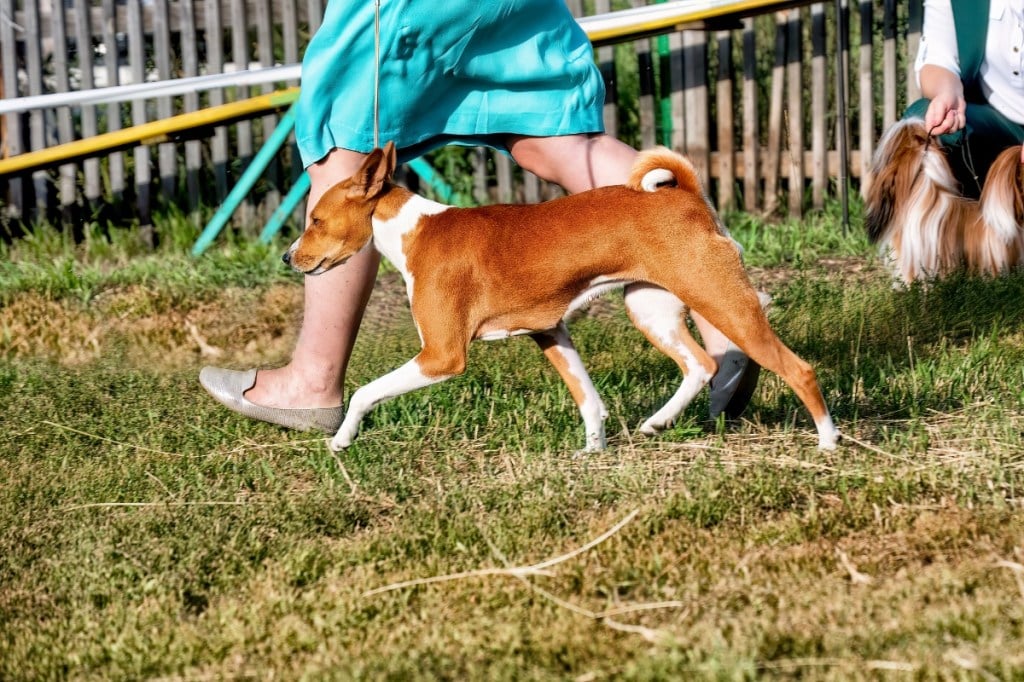
Basenjis Common Health Problems
The average life expectancy for a basenji is 13 to 14 years. The breed is prone to certain health issues, so ensure that any breeder you work with can provide health clearances for hip and elbow dysplasia, thombopathia, hypothyroidism, von Willebrand’s disease, and eye disorders.
These are some of the most common health issues that arise with basenjis
- Pyruvate kinase deficiency (genetic red blood cell issue)
- Immunoproliferative systemic intestinal disease (irritable bowel syndrome)
- Fanconi syndrome (kidney disease)
- Hypothyroidism
- Progressive retinal atrophy
- Persistent pupillary membrane
- Umbilical hernia
- Hip and elbow dysplasia
- Luxated patella
- Dental disease
- Bladder stones
Diet and Nutrition for Basenjis
The recommended amount of food for an adult basenji is ¾ cup to two cups of dry dog food daily. This amount of food should be divided into two meals each day. Puppies should typically eat three times per day. If you use treats for training rewards, offer them sparingly because basenjis are known to be beggars and demanding, which can lead to obesity in your dog.
Where to Adopt or Purchase Basenjis
If you would like to purchase a purebred basenji, one place to start your search is the Basenji Club of America. This is the national breed club for basenjis and a resource for finding a breeder near you. However, these dogs are relatively rare, so you may be on a breeder’s waiting list for a long time.
Basenji Rescue and Transport is a rescue organization that has been helping to rescue, rehabilitate, and rehome dogs of this breed since 1999. You can complete an adoption form on the organization’s website or rehome your current basenji pet if you can no longer care for your dog. There are also regional organizations to look into based on where you live, such as the Colorado Basenji Rescue and the Medfly Brigade Basenji Rescue of California.
Related Breeds
Although the basenji is an undeniably unique breed, there are other similar types of dogs that you might be interested in if the basenji has caught your attention. The following breeds share various characteristics that basenji-lovers will recognize and appreciate:
- Boerboel
- Azawakh
- Ibizan hound
- Whippet
- Italian greyhound
- Pharaoh hound
- Harrier
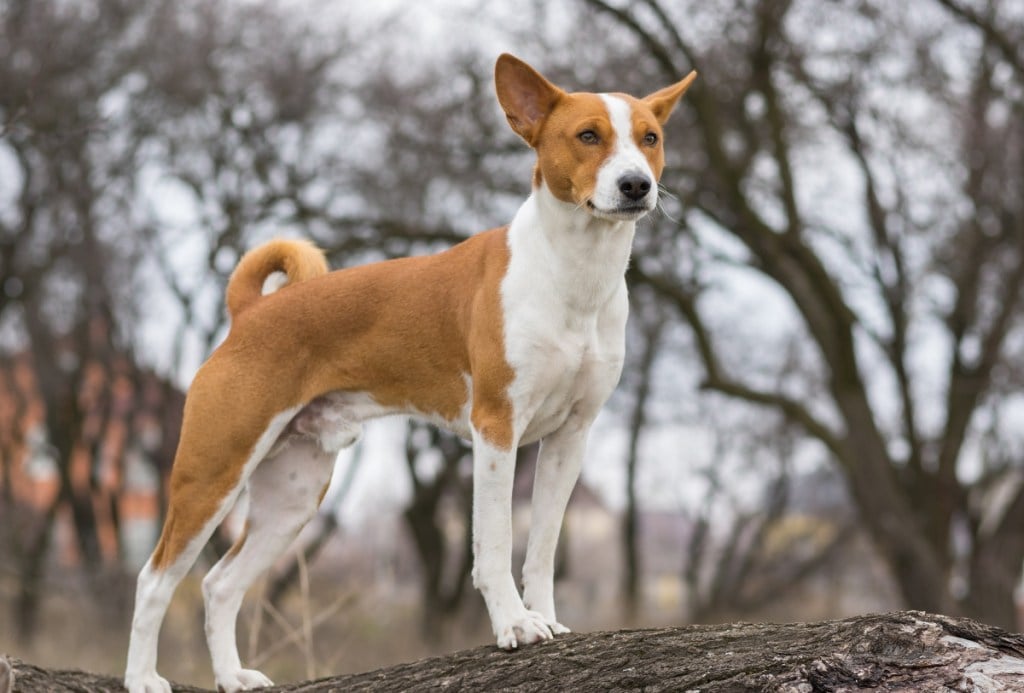
Pet Insurance for Basenjis
Once you find a lovable basenji to join your family, the next step is to start preparing for your dog’s future and budget for potential veterinary care. Healthy Paws offers basenji pet insurance for dogs of all ages, with no per-incident, annual, or lifetime caps. We have one easy-to-understand dog insurance policy that allows you to visit any licensed vet you trust and submit the bills to us online or through our mobile app.
When your basenji needs an emergency room visit, cancer treatment, or alternative care, Healthy Paws is here for you. The Healthy Paws plan covers accidents and illnesses that your basenji may suffer from, and it also covers chronic conditions, specialty hospitals, hip dysplasia, and hereditary and congenital conditions. Visit our frequently asked questions page to learn more about pet insurance, or get your basenji quote today to protect your furry friend.
